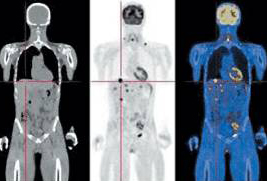
Having a child who suffers from a lung condition can be a difficult experience. There are many specialists who can assist a child diagnosed with a lung disease. These conditions can be diagnosed and treated by pediatric pulmonologists. They can also help children with chronic lung diseases. They can also assist children in managing their condition, so they can live happy, healthy lifestyles.
When choosing a pediatric physician, it is important that they have a variety of experience. Asking the doctor about their experiences in the field is a great way to make sure you are finding someone with a broad range of experience. This will help you to make sure you find the best doctor possible for your child.
Children's Hospital of Eastern Virginia's pediatric physicians are well-respected for their work with children. They are experts in a variety of areas of pediatric medicine, including genetic disorders, asthma, and other lung diseases. They can also diagnose and treat premature babies with lung disease. In addition, they are also trained to help children who have lung conditions that affect the brain.

When choosing a pediatric pulmonologist, make sure that they are certified by the American Board of Pediatrics. This certification will ensure that you will be treated with respect and understanding by your doctor. You should also ensure that your doctor is involved in professional associations. The American Thoracic Society is one example of such organizations. In addition, you should be sure that they have received training from prestigious universities.
The American Board of Pediatrics certifies the pulmonologists of the Children's Hospital of Eastern Virginia. They also have a wide range of specialties. Primary ciliary disorders, cystic Fibrosis, and chronic cough are some of these specialties. The pediatric orthopedics, pediatric neurosurgery, pediatric ophthalmology, and pediatric infectious disease are just a few of the specialties.
Children's Hospital of Eastern Virginia offers consultations to children with lung problems. These physicians are also qualified in pediatric critical-care medicine and have been published on prestigious journals.
One of the children's hospital physicians is certified in pediatric urology. He is also an American Academy of Pediatrics member and a fellow of the American College of Chest Physicians. Another doctor at the Children's Hospital was trained in ophthalmology. He is also an American College of Chest Physicians member and the American Thoracic Society member.

Children's hospital's pediatric specialists are committed in providing the best care for Eastern Virginia's children. They are trained to diagnose, treat and monitor children with chronic lung conditions and provide advanced diagnosis. They are also trained to help children with lung conditions live happy and healthy lives.
FAQ
What is "health promotion"?
Health promotion is about helping people to live longer and remain healthy. It focuses on preventing sickness rather than treating existing conditions.
It includes activities like:
-
Eating right
-
Get enough sleep
-
exercising regularly
-
Staying active and fit
-
Do not smoke
-
managing stress
-
Keeping up to date with vaccinations
-
How to avoid alcohol abuse
-
Regular screenings and checkups
-
Learn how to deal with chronic illnesses.
What are the three types?
The first system is a more traditional system that gives patients little choice about who they see for treatment. They might go to hospital A only if they require an operation. Otherwise, they may as well not bother since there isn't any other option.
This second system is fee-for service. Doctors make money based on how many drugs, tests and operations they perform. If you don’t pay them enough they won’t do additional work and you’ll be twice as expensive.
The third system uses a capitation system that pays doctors according not to how many procedures they do but what they spend. This encourages doctors use of less expensive treatments, such as talking therapies, instead of surgical procedures.
How can I become creative in my health care?
There are many ways to be a creative health professional. Some people start out as students, while others begin their careers working in other fields such as business or engineering.
Some students choose to focus on a specific topic such as health policy, leadership, management or leadership. Some elect to study an elective course which explores different perspectives of health and care.
No matter what pathway you choose, there are many ways to learn about topics in health and healthcare. These include readings, group discussions and assignments as well lectures. Other options include workshops, conferences, or seminars.
You will be able to communicate with patients, colleagues, and clients once you've completed the program.
You might even get a doctorate.
What is a system of health in public health and what does it mean?
The health system refers to all activities involved with providing medical services to a community. It covers service delivery, financing and regulation as well as education, training, information systems, and research.
Statistics
- Price Increases, Aging Push Sector To 20 Percent Of Economy". (en.wikipedia.org)
- The health share of the Gross domestic product (GDP) is expected to continue its upward trend, reaching 19.9 percent of GDP by 2025. (en.wikipedia.org)
- For instance, Chinese hospital charges tend toward 50% for drugs, another major percentage for equipment, and a small percentage for healthcare professional fees. (en.wikipedia.org)
- Consuming over 10 percent of [3] (en.wikipedia.org)
- For the most part, that's true—over 80 percent of patients are over the age of 65. (rasmussen.edu)
External Links
How To
What are the main segments of the Healthcare Industry industry?
The healthcare industry is made up of key segments such as medical devices, pharmaceuticals and diagnostics, biotechnology, therapy, health information technology, medical equipment, and other medical devices.
Defibrillators are blood pressure monitors, blood pressure monitors, stethoscopes or ultrasound machines that can be used to diagnose, prevent, or treat diseases. These products are usually designed to diagnose, prevent, or treat diseases.
Pharmaceuticals can be used to treat symptoms or cure diseases. These include antibiotics.
Diagnostics are tests done by laboratories to determine illness or injury. These include blood tests, urine samples and CT scans.
Biotechnology is the process of using living organisms (such bacteria) to make useful substances that can be used to benefit humans. These include insulin, vaccines and enzymes.
Therapeutics are the treatment of diseases and symptoms that is administered to people to relieve them. They may include drugs, radiation therapy, or surgical interventions.
Health information technology includes computer software programs that help physicians, and their teams manage data related to patient records. It helps doctors and their teams track which medications are being used, when they should have been taken, and if they work properly.
Equipment used in the diagnosis, treatment, and monitoring of medical conditions or illnesses is called medical equipment. Dialysis machines include pacemakers, ventilators and operating tables.